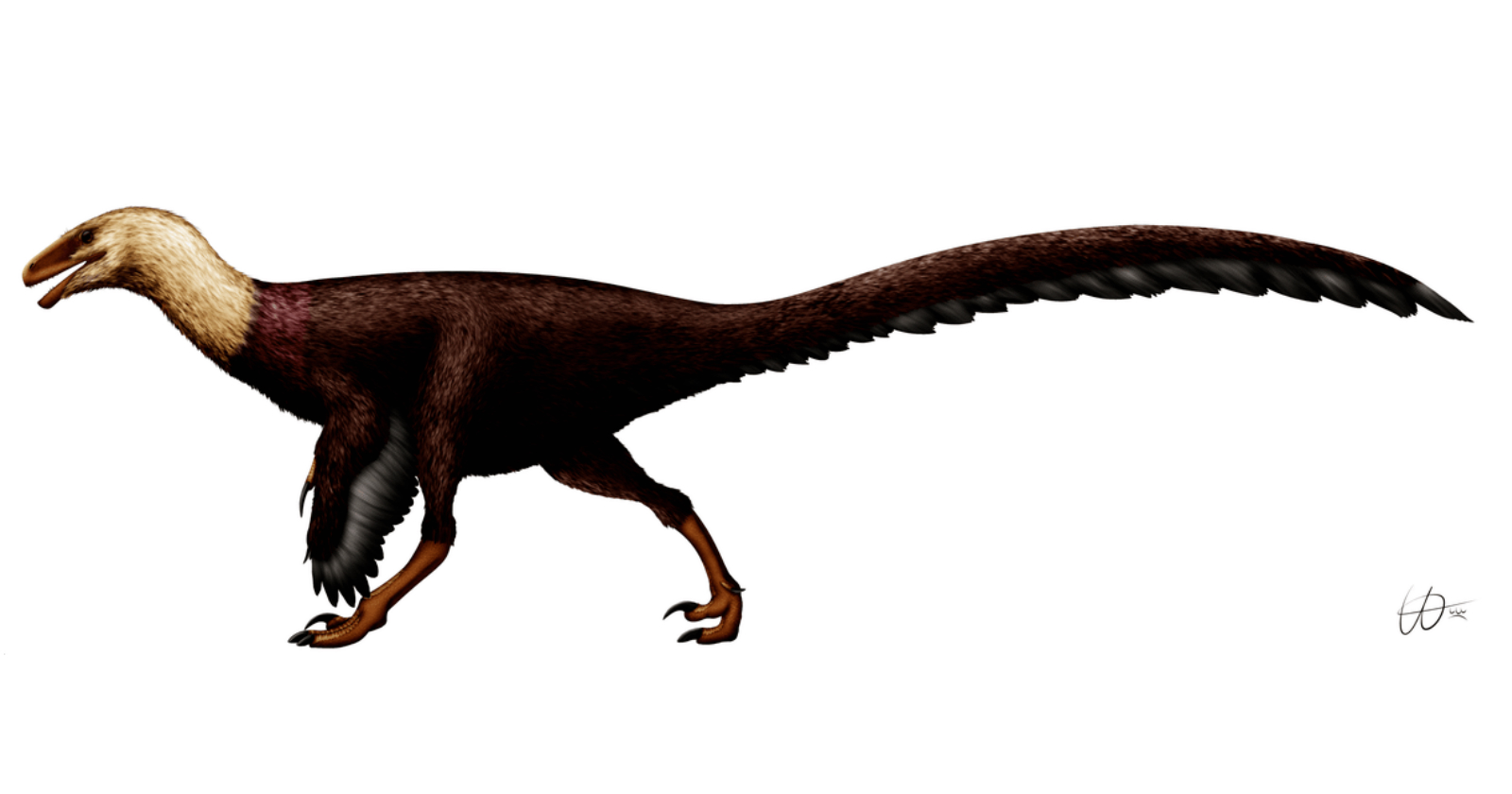
Ornitholestes, which means "bird robber", was a small bipedal carnivore.
An almost complete skeleton of him is known to have been found in Wyoming, USA.
It was about 2 m long, with the tail alone accounting for half of its body length.
Ornitholestes had a long skull, neck and tail, with the neck probably being very flexible.
He weighed between 15 and 20 kilograms.
| Profile | Ornitholestes |
|---|---|
| Prehistoric Era | Upper Jurassic 157.3 to 145 million years ago |
| Order | Saurischia |
| Suborder | Theropoda |
| Family | Coelurosauria |
| Tribe | Maniraptora |
| Genus | Ornitholestes |
| Species | Ornitholestes hermanni |
| Height | 0.8 meter |
| Length | 2 meter |
| Weight | 13 - 20 kilogram |
| Territory | North America, Morrison Formation |
The arms were well developed and ended in three long clawed fingers. These enabled him to catch fast and elusive prey.
The hind limbs were also well developed, with strong running muscles.
Slightly built and long-legged, Ornitholestes was a very fast bipedal runner.
It probably ate small, fast lizards and even early mammals.
Its head was proportionally smaller than most other predatory dinosaurs. However, the skull was compactly built, with a short snout and a robust lower jaw.

A special characteristic of Ornitholestes are its teeth. These were clearly smaller and more conical shaped at the front half of the jaw than those of the rear half ( heterodont).
The teeth on the front half were conical and slightly serrated. They served for tearing out pieces of meat from its prey.
The teeth in the back part of the mouth were directed backwards. They had a reinforced serration to cut meat more effectively.
A feature with which Ornitholestes is most often depicted is a small horn on the tip of the snout. Today, however, it is believed that this horn did not exist at all. Because it was subjected to intense pressure during the fossilization process, the skull was deformed and this deformation was mistakenly interpreted as a horn.

A kinematic study of Ornitholestes at the forelimbs showed that it could extend its wrists only moderately.
Flexion, on the other hand, was well possible, both in the wrist and elbow joints. The elbow could be strongly flexed beyond a right angle.
Thus, he was able to hold objects to his chest. Clamping the forearms to protect them or to reduce heat loss are also discussed.
Image source: PaleoNeolitic, CC BY-SA 4.0 https://creativecommons.org/licenses/by-sa/4.0, via Wikimedia Commons
PaleoNeolitic, CC0, via Wikimedia Commons
Etemenanki3, CC BY-SA 4.0 https://creativecommons.org/licenses/by-sa/4.0, via Wikimedia Commons